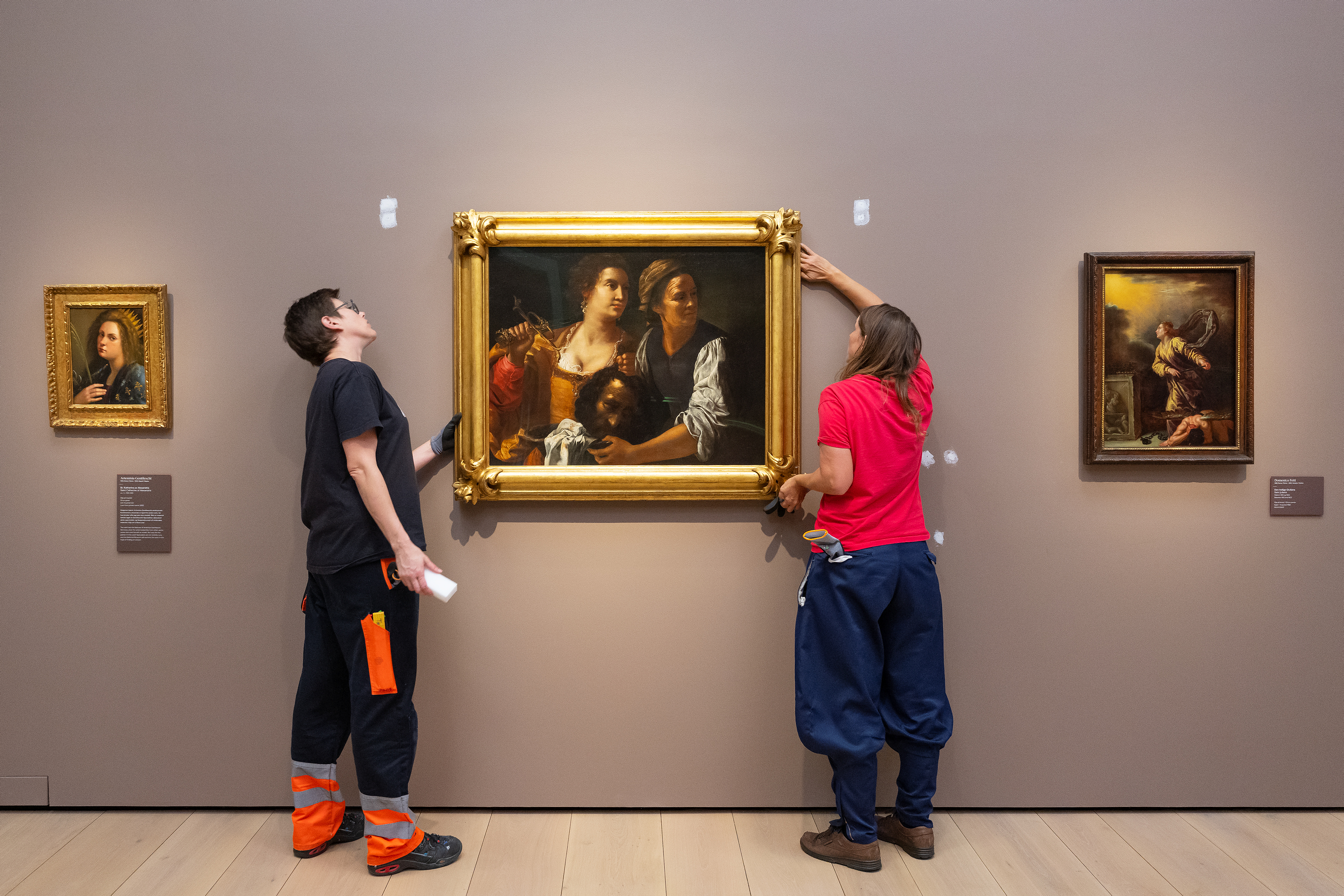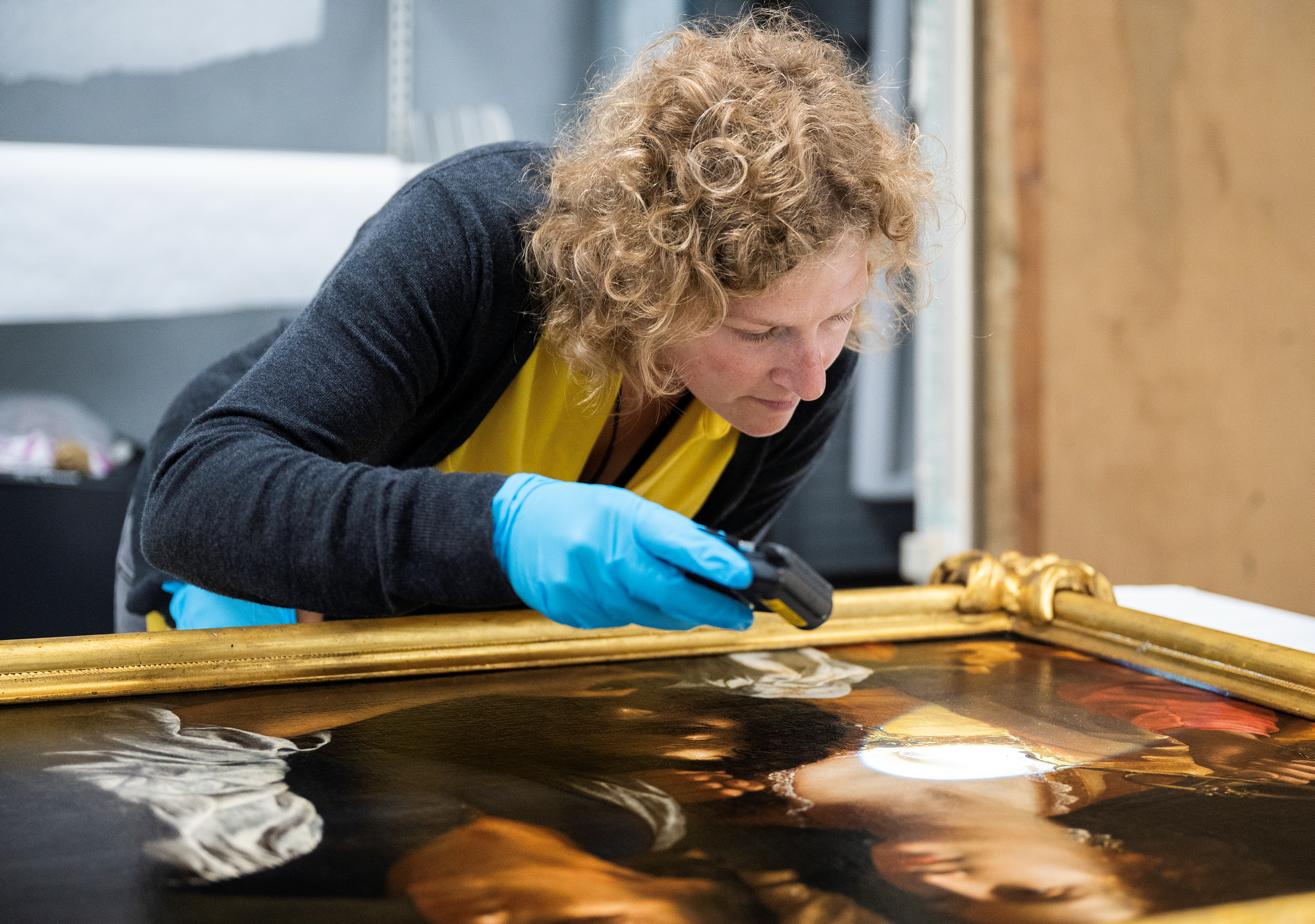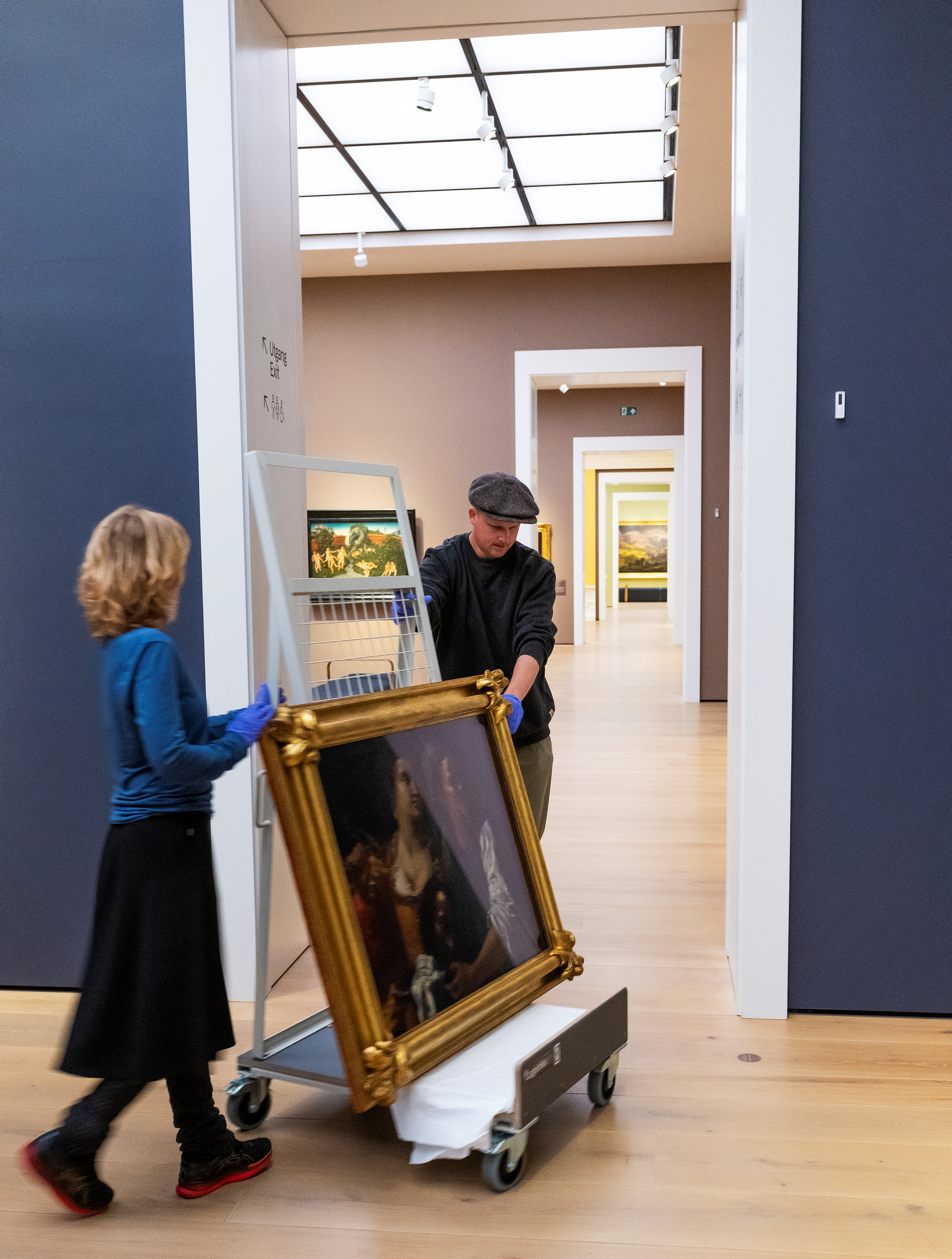Artemisia Gentileschi, Judith and her handmaid with the head of Holofernes, 1639-1640, Oslo, National Museum | Courtesy National Museum
The head of Holofernes in the foreground, lying on a tray supported by the handmaid Abra, the left fist of Judith to grip the general’s hair, the right hand to stop the scimitar, while the gaze of the two women runs away, in the same direction .
One of the favorite scenes from Artemisia Gentileschi’s brush, in which the biblical heroine is portrayed with the severed head of the enemy general arrives at the National Museum of Art, Architecture and Design in Oslo to stay there forever thanks to the purchase by DNB Savings Bank Foundation, the independent Norwegian foundation that contributes to philanthropic causes in Norway and that since 2005 has bought works of art deposited in various Norwegian art museums with long-term agreements.

Artemisia Gentileschi, Judith and her handmaid with the head of Holofernes, 1639-1640, Oslo, National Museum | Courtesy National Museum
But let’s get to the new entry of the museum, Judith and the servant with the head of Holofernes, a rare work considering that Artemisia’s works usually show many uncertainties about attribution and dating. Instead in this painting, the name of the Baroque artist is clearly visible on the sword held by Judith, on the left side of the picture.
The work was carried out between 1639 and 1640, probably during the artist’s stay at the London court, where his father, the painter Orazio Gentileschi, active in the court of King Charles I was also located.
In London the artist lived a poorly documented period, from the end of 1638 to 1640, the year of his return to Naples.

Artemisia Gentileschi under the lens at the National Museum in Oslo | Courtesy National Museum
“We are proud to have another painting by Artemisia Gentileschi at the National Museum – explains director Karin Hindsbo. She was a monumental figure in her day and is an example of how artists have not always been neglected ”.
The new acquisition will make the National Museum of Art, Architecture and Design in Oslo the museum with the largest number of works by Artemisia Gentileschi outside Italy. In fact, the largest museum in Scandinavia, which reopened its doors completely renovated last June 11, houses two other masterpieces by the artist: the early work Saint Catherine of Alexandria (1614–15), and Penitent Mary Magdaleneas well as an older version of Judith and the handmaid with the head of Holofernes made by Orazio Gentileschi and on which Artemisia must have worked while in training at her father’s studio.

Artemisia Gentileschi at the National Museum in Oslo | Courtesy National Museum
“We are delighted that this masterpiece will now be on display at the National Museum in Oslo which will now boast four paintings by Artemisia Gentileschi, which is rare in any other museum,” says Anders Bjørnsen, manager for Art and Culture at the DNB Cassa Foundation in Savings.
The painting will be exhibited at the National Museum of Oslo before flying to Italy, on the occasion of the next exhibition dedicated to the Baroque painter, expected from 1 December 2022 to 20 March 2023 at the Gallerie d’Italia in Naples, at the end of which will return home.
![]() Read also:
Read also:
• The new National Museum of Norway opens in Oslo, a slate and oak jewel open to the city

